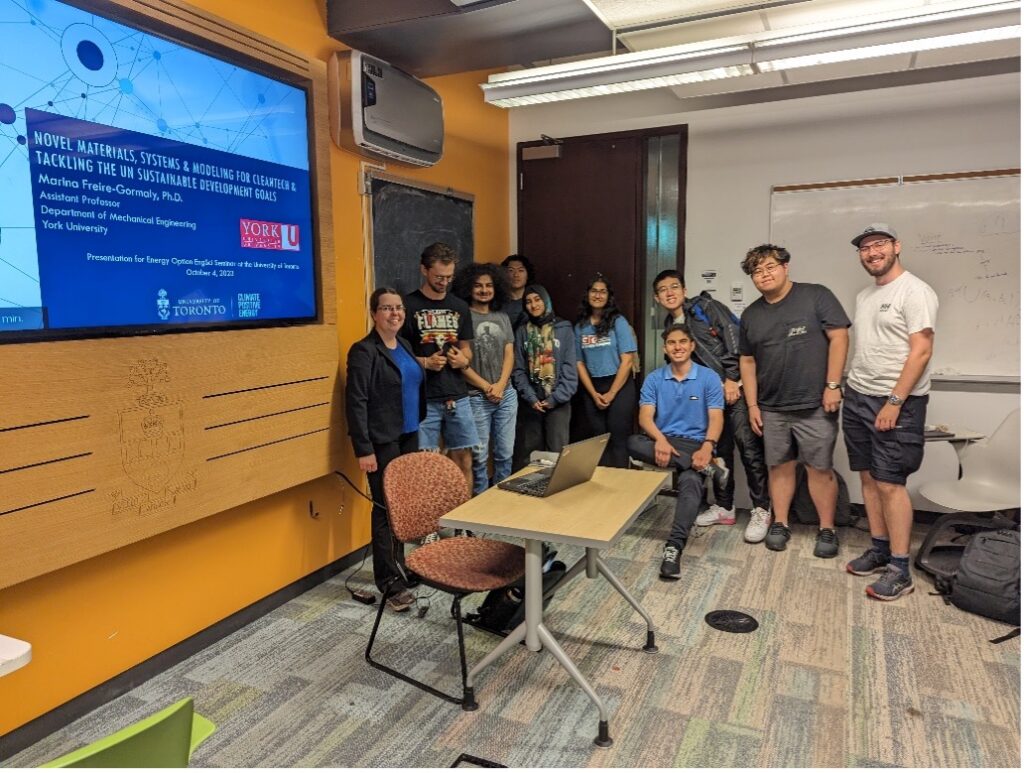Theme 3: Early Warning Systems of Infectious Diseases
Co-Project Investigator
- Dr. Marina Freire-Gormaly, York University
Project Overview
This project aims to develop validated models for aerosol transmission in public spaces and transportation modes. The project team will analyze the effectiveness of different NPIs, including masks and HVAC interventions, to mitigate the transmission of infectious diseases. In addition, the project will provide insights to inform the development of early warning detection systems for emerging infectious diseases through numerical modelling and experimental validation. The project team is also including ML to further advance the research.
Impact on Emerging Infectious Disease Modelling Initiative (EIDM)?
The integration of SIR and CFD modelling, complemented by ML, has significantly elevated the Emerging Infectious Disease Modeling Initiative. This synergy enables a more comprehensive understanding of aerosol transmission dynamics, refines intervention strategies, and contributes to developing robust early warning systems.
Focus Areas and Research Achievements

We are conducting research on how aerosols move within indoor environments to understand the risk of transmission of airborne diseases, such as COVID-19, and how we can improve the HVAC design to improve indoor air quality.
Dr. Marina Freire-Gormaly, York University
Guided by the expertise of accomplished Master’s students—Arma Khan, an OGS recipient; Kishon Webb, recipient of an NSERC CGS-M, and Abu Raihan Ali—the team leverages cutting-edge Computational Fluid Dynamic modelling techniques with ANSYS FLUENT.
The figure (on the right) shows aerosol particles spread from an infected person in the middle of the classroom in the Bergeron Building towards the back of the classroom where the HVAC outlets are located. Ongoing research shown in the figure is from Arma Khan’s modelling of an infected person inside a classroom, which shows how the aerosol moves toward the back of the classroom. Master’s student Arma Khan conducted this research under Dr. Marina Freire-Gormaly’s supervision.
To learn more, listen to Kishon Webb’s conference presentation at the CSME Congress 2022 in Edmonton on modelling the molecular dynamics of the COVID-19 virus in humid outdoor environments.

One Health Approach Integration
Implementing the One Health approach has been pivotal to this research, providing a systematic lens that considers the interconnectedness of human, animal, and environmental health. This approach enhances the depth and breadth of our findings, contributing to a holistic understanding of infectious disease dynamics.
Research Team and Collaborators
Master’s Students
- Arma Khan (Graduated Nov. 2022), Currently an EIT at Chalk River Laboratores
- Kishon Webb (Graduated Aug. 2023, and currently a Research Assistant)
- Abu Raihan Ibna Ali (Master’s student from May 2022-Present)
Research Assistants
- Whitney Onuigbo (Research Assistant August 2022-present)
- Harman Nagra (Undergraduate Research Assistant, May 2021 to August 31, 2023), Currently an EIT at Tesla
- Keandre W. Webb (Undergraduate Research Assistant, May 2021 to August 31, 2023), Currently an EIT at HydroOne
- Maria Flores (Undergraduate Research Assistant, May 2023 to August 31, 2023), Currently an undergraduate student
Post-doctoral Fellow
- Robert L. F. Liang (Post-doctoral Fellow, York University May 2022 to Present)
Our diverse and dedicated team, comprised of past and present members, collaborates to push the boundaries of infectious disease modelling and create a safer future for all.
Media Coverage
Media interviews on COVID-19 and Aerosol Transmission with (Left) CityNews on January 13th, 2022, (Middle) CTV News on May 7, 2021, (Right) CTV News on April 21, 2021 where Arma Khan is seen working on a CFD model of aerosols moving in an isolation ward.



